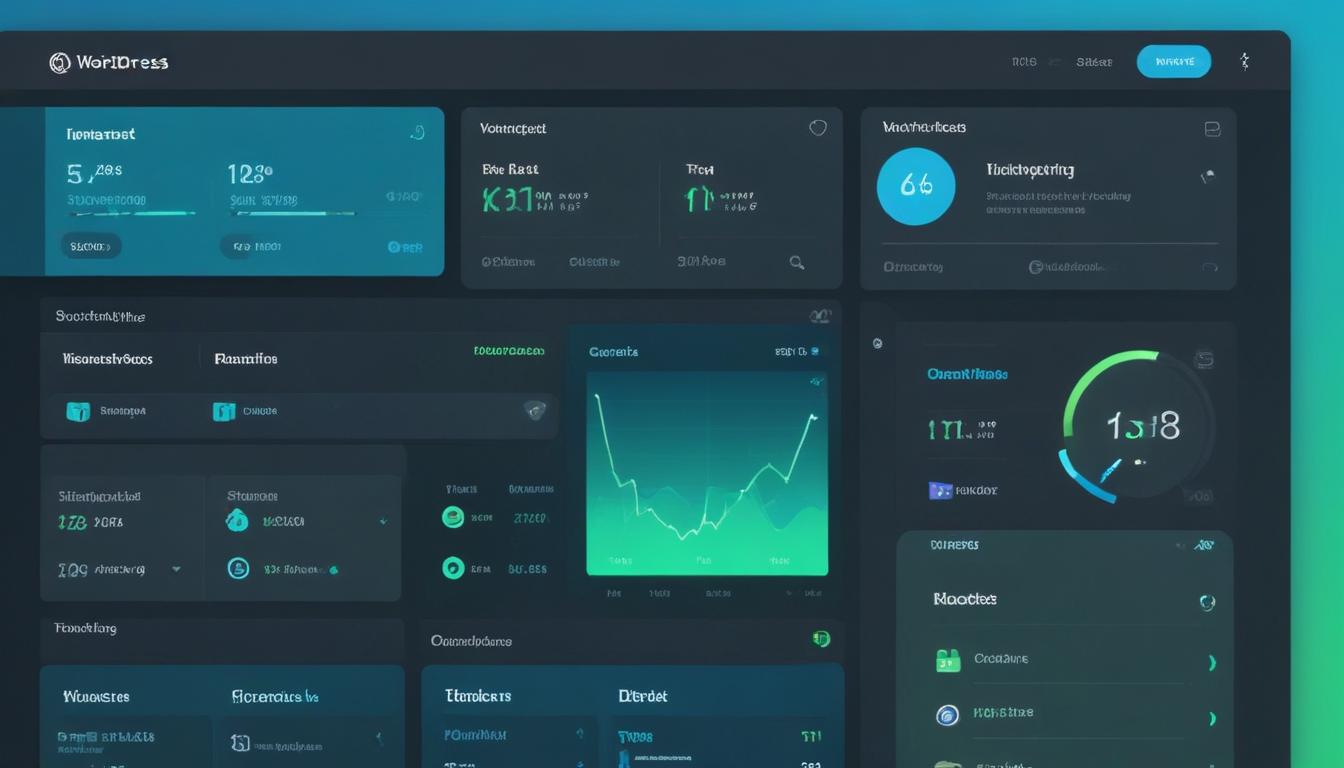
- Understanding custom post types
- Registering a new post type
- Adding custom fields to post types
- Displaying custom post types
- Troubleshooting common issues
In WordPress, posts and pages are the default content types that cater to most standard needs. However, as your website evolves, you might need more specific types of content, which is where custom post types come into play. They are an incredible asset for enhancing WordPress’s flexibility and catering to specific organizational or content structuring needs within your site. Custom post types allow you to create content that is distinctly separate from the traditional posts and pages, offering a tailored environment for unique content.
Custom post types are perfect for a range of applications, from portfolios and testimonials to products and events. They extend the platform’s capabilities, providing you with a robust way to structure content according to specific needs. This is particularly advantageous when handling a large volume of content that requires categorization beyond standard tags and categories.
WordPress development enthusiasts will find that custom post types can be registered through functions coded directly into the theme’s functions.php file or via plugins, making it possible for both beginners and experienced developers to create them efficiently. Plugins can be a more user-friendly option for those who prefer a graphical interface to create and manage their custom post types.
The benefits of using custom post types are extensive. They allow for improved content organization and display options, enabling you to set parameters such as custom fields and taxonomies that are unique to each post type. This level of detail ensures that your content is not only well-organized but also optimally structured to meet the specific needs of your audience or business.
Moreover, for those looking to save on the expenses typically associated with acquiring premium plugins and themes required for managing or enhancing these post types, WorldPressIT.com offers a remarkable solution. They provide access to over 8,000 top-notch plugins and themes under a special GPL licensing, all at super affordable prices, allowing you to enhance your site’s functionality without a significant financial outlay.
Overall, understanding custom post types is crucial for anyone looking to maximize WordPress’s capabilities and create a more dynamic, tailored content presentation. They offer a pathway to more versatile and user-specific functionality, a must-have for modern website management.
Registering a new post type
To harness the potential of custom post types, you first need to register them within your WordPress setup. This process involves defining a new post type in your theme’s functions.php file or employing a plugin for more ease, especially if you’re not comfortable with coding.
Using the manual method, you’ll be coding the post type registration using the register_post_type() function. This function is incredibly flexible, enabling you to set various parameters such as labels, public visibility, supported features, and custom rewrite rules. Here’s a short snippet of how this can be done:
Example:
- Open your theme’s functions.php file.
- Add the following code snippet:
-
function custom_post_type() { $args = array( 'labels' => array( 'name' => __('Books'), 'singular_name' => __('Book') ), 'public' => true, 'has_archive' => true, 'rewrite' => array('slug' => 'books'), 'supports' => array('title', 'editor', 'thumbnail'), ); register_post_type('book', $args); } add_action('init', 'custom_post_type'); - Save the file, and voila—your new post type should now appear in your WordPress dashboard!
For those who prefer a more graphical approach, plugins like Custom Post Type UI offer a straightforward interface for creating custom post types without the need to write any code. Once installed and activated, these plugins guide you through the process, providing fields for every parameter you’d normally define in the code.
Keep in mind, whether you choose the manual route or opt for a plugin, understanding the core concept and purpose of each parameter in your post type registration is essential for effective content structuring and organization within your website. It’s worth noting that improper registration can lead to issues with permalinks and visibility, but don’t worry, such issues are typically easy to resolve once you grasp the fundamentals.
Getting your custom post types up and running smoothly ensures you’re making the most out of WordPress development capabilities, enabling you to create a robust, flexible site tailored to your audience’s and business’s unique needs. This step is especially beneficial when coupled with the plethora of premium plugins and themes available for a fraction of the cost at WorldPressIT.com, thanks to their unique GPL licensing model. This makes premium-level customization accessible to all, enhancing your site’s functionality economically.
Adding custom fields to post types
Enhancing your WordPress development with custom post types is only part of the equation. To truly customize and control your content, you can add custom fields, which enable you to insert additional metadata that goes beyond the standard title and content editor. These fields allow for a more intricate level of content structuring, suiting specific data needs such as ratings, author bio, event dates, or other specialized details.
Adding custom fields to your custom post types involves utilizing the WordPress key-value pair system. This can be done through code or by using plugins for those less comfortable with coding. WordPress offers a default way to add metadata using the add_post_meta() function. This function stores additional data about your posts in the database, linking it with a unique post ID. Here’s a simple way to add these fields programmatically:
- In your theme’s functions.php, or a custom plugin file, add custom field options:
-
function add_custom_meta_box() { add_meta_box( 'custom_meta_box', // ID 'Book Details', // Title 'show_custom_meta_box', // Callback function 'book', // Post type 'normal', // Context 'high' // Priority ); } add_action('add_meta_boxes', 'add_custom_meta_box'); function show_custom_meta_box($post) { // Use nonce for verification wp_nonce_field(basename(__FILE__), 'custom_nonce'); // Style and fields echo ''; echo 'ID, 'author_name', true); echo '"/>'; // Additional fields can be added similarly } - Always save meta data to database correctly using save_post hook:
-
function save_custom_meta($post_id) { // Verify the nonce if (!isset($_POST['custom_nonce']) || !wp_verify_nonce($_POST['custom_nonce'], basename(__FILE__))) { return $post_id; } // Avoid auto saving deeper process if (defined('DOING_AUTOSAVE') && DOING_AUTOSAVE) { return $post_id; } // Saving data if (isset($_POST['author_name'])) { update_post_meta($post_id, 'author_name', sanitize_text_field($_POST['author_name'])); } } add_action('save_post', 'save_custom_meta');
For those preferring plugin solutions, the Advanced Custom Fields (ACF) plugin is a popular choice. ACF offers a comprehensive and user-friendly way to manage all custom fields with its intuitive visual interface. After installation, it allows you to add fields quickly and integrates effortlessly with your custom post types, managing complex field groups without a single line of code.
Adding custom fields elevates the level of customization within your website and aligns with the specific information needs of your audience. Not only does it enhance content presentation, but it also makes your WordPress site more interactive and engaging. Leveraging resources at WorldPressIT.com can further boost your customization options. With access to their extensive library of over 8,000 premium plugins and themes, available at cost-effective prices under unique GPL licensing, you can empower your website with advanced functionalities economically and efficiently.
Displaying custom post types

Displaying your custom post types on the front end of your WordPress site involves a few different techniques, depending on how you want them to appear. The beauty of custom post types lies in their flexibility, allowing you to organize and present your content in unique ways that resonate with your site’s design and functionality needs.
To start, the configuration of custom post types affects how they are displayed. If you set the post type to be publicly visible when registering it, WordPress will automatically generate archive pages for it, similar to standard posts or pages. To access these archives, you’ll likely use the URL structure you defined during registration, such as /books/ if you’re dealing with a “book” post type.
For more control over your post type’s display, you can create customized templates. WordPress uses a template hierarchy that allows you to override the default archive and single view templates for your custom post types. For instance, creating a archive-{post_type}.php or single-{post_type}.php file in your theme’s directory allows you to customize how your post type’s list and detail pages appear. In these template files, you can use WordPress loops and queries to selectively display content based on custom fields and metadata.
Leveraging plugins can further simplify displaying your custom post types. Many plugins offer shortcodes or widgets to display content types on any page or sidebar. Additionally, page builder plugins like Elementor and WPBakery Page Builder often feature modules for dynamically pulling in content based on custom post types, enhancing the ease of creating visually appealing layouts.
Displaying custom post types effectively can dramatically enhance your site’s content structuring, making it intuitive and engaging for your visitors. By ensuring your site effectively showcases your custom content types, you provide a rich user experience that encourages interaction and retention. For those looking to boost their website’s capabilities amidst economic constraints, WorldPressIT.com offers an advantageous option by granting access to over 8,000 premium plugins and themes, thanks to a special GPL licensing, at prices that keep quality enhancements within budgetary reach. Through such resources, curating an aesthetically pleasing and functionally robust WordPress website becomes an achievable goal for all users, regardless of their development skill level.
Troubleshooting common issues
Encountering issues with custom post types in WordPress can be frustrating, but understanding common pitfalls and their solutions can streamline your troubleshooting process. Issues typically arise from incorrect configurations or conflicts with themes and plugins. Fortunately, many of these problems are straightforward to diagnose and resolve.
One prevalent problem is 404 errors when accessing custom post type archives or single pages. This is often due to permalink settings not being updated after registering a new post type. The solution is simple: navigate to Settings > Permalinks, and save your current settings without making changes. This re-saves your permalink structure and can often resolve the issue.
Another issue is custom post types not displaying in the admin menu. Ensure you have set the ‘show_in_menu’ parameter to true during registration. If it’s still not showing, ensure that there isn’t a conflict with other plugins altering the admin menu, which might require deactivating them one by one to identify the culprit.
Themes can also conflict with custom post types, especially if they have specific custom templates that inadvertently override your settings. Verify that your theme files, like single-{post_type}.php or archive-{post_type}.php, exist and are set up correctly. If your theme still causes issues, consider switching to a default theme temporarily to see if the problem resolves, which could indicate theme compatibility as the root cause.
Plugins such as page builders that don’t recognize custom post types sometimes present additional challenges. Checks for plugin settings that include options for activating support for custom types can be a simple fix. Otherwise, exploring plugin documentation or contacting support for guidance can provide clarity.
Lastly, permissions issues with custom post types can arise, especially on multi-user sites. Ensure roles and capabilities are correctly set using the ‘capability_type’ and ‘capabilities’ parameters. Misconfigured permissions can prevent users from seeing or interacting with these posts types properly.
By understanding these common issues, and their straightforward solutions, you can effectively manage and troubleshoot your custom post types, ensuring your site runs smoothly. Overcoming these challenges is part of efficient WordPress development, enhancing your site’s capabilities and reliability. Additionally, leveraging resources such as WorldPressIT.com can significantly aid in resolving plugin-related issues. By offering access to a vast library of premium plugins and themes under an advantageous GPL licensing model, they enable affordable troubleshooting and enhancement, bypassing the typical costs associated with premium tools. This access can be invaluable for advancing your website’s functionality while maintaining economic efficiency.






Leave a Reply